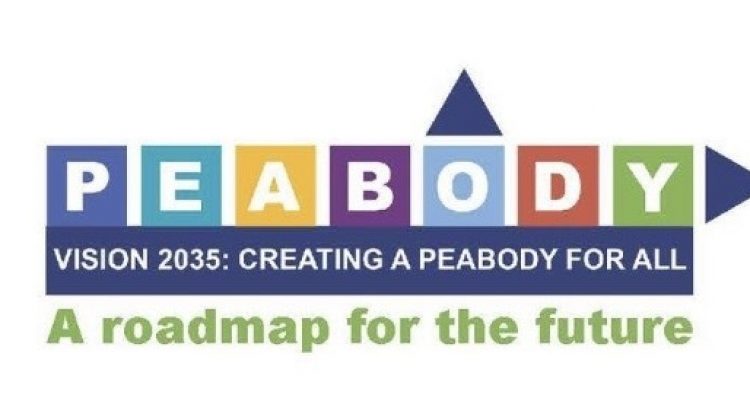PEABODY— Residents and city officials gathered at Higgins Middle School Wednesday night for a Visioning Workshop of the city’s new updated master plan.
Mayor Ted Bettencourt and his administration announced the comprehensive update known as Vision 2035 earlier this month. The Visioning Workshop was advertised as the first of multiple opportunities for the community to provide input.
The event was led by engineering services company Stantec, which the city is partnering with to implement its plan. Stantec Senior Planner Alison LeFlore reiterated the scope of a comprehensive master plan and all that it encompasses.
“It really provides the foundation and basis for decision-making in the city across the board,” LeFlore said. “We do a lot of physical development, but this also looks at economic policy, services, and facilities, cultural resources… it really touches on everything and all the building blocks of what a city is doing.”
Vision 2035 has seven general focus areas, including land use, housing, economic development, natural and cultural resources, open space and recreation, services and facilities, and transportation.
Stantec Vice President and “Urban Places Fellow” David Dixon relayed some data projections that his company and the city are considering when implementing the plan.
“80 plus percent of net new households for the next 20 years are going to be singles and couples without kids,” Dixon said.
He added that these new demographics tend to prioritize things like multi-family housing, walkability, and experiential opportunity.
“We are entering a period of unprecedented opportunity to attract a whole new generation of folks to live in downtown Peabody,” Dixon said. “To move into new mixed-use walkable developments where we have strip centers now and shopping centers and things like that.”
Dixon also discussed how the increasing popularity of hybrid and remote work has caused a significant decline in the office market and that, in his opinion, the housing market is much more important to a city’s future success.
LeFlore demonstrated some additional statistics pertaining specifically to Peabody, including that 46% of the city’s households are married couples with children. While that number is the plurality, it is not relatively high as it is still less than half of the population. In addition, she said that the number of children under 18 is decreasing while the elderly population is increasing.
Once the presentation concluded, the attendees formed seven separate groups. Each group was tasked with coming up with five priorities it felt were the most important for Peabody’s future.
When the groups shared their priorities, they found many commonalities within their visions. Some shared themes included expanding public transportation options and increasing connectivity with neighboring communities, affordable and attainable housing, increased support and celebration of ethnic diversity, and creating a more vibrant downtown with an “identity.”
LeFlore said that the input gathered at Wednesday’s workshop will be an important factor when the city finalizes its vision statement in the coming months.

